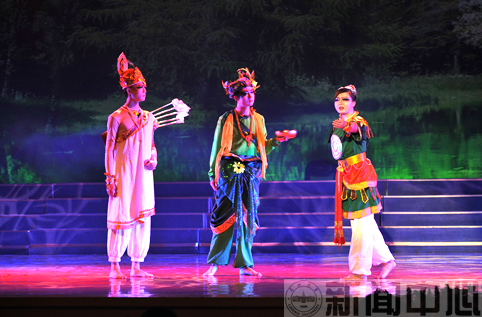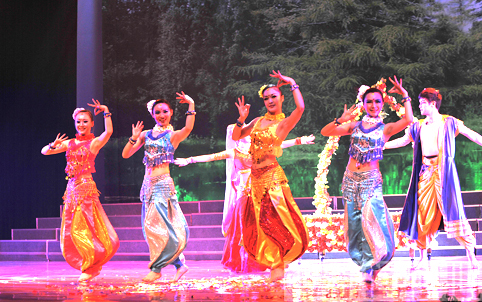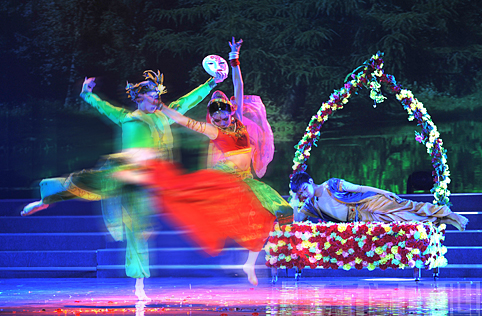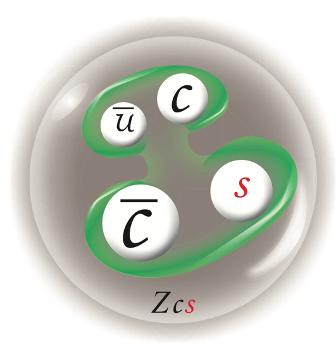At 8:00 p.m. on March 24, the drama of Chitra was performed to commemorate the 150th anniversary of Rabindranath Tagore in the Wenxintang Auditorium in Yuzhong campus, Lanzhou University (LZU). Many honorable guests were present at the performance, including Dr. S. Jaishankar, Indian Ambassador to China, Mr. Arun Suha, cultural councilor of Indian Embassy, Dr. Shilpak Ambule, First Secretary of Indian Embassy, Shambhu Hakki, Third Secretary of Indian Embassy; Chen Weizhong and Zhang Baojun, deputy directors of Foreign Affairs Office of Gansu Provincial Government; Wang Hansong, Secretary of the LZU CPC Committee Jingtao, Vice President of LZU, Xu Shengcheng, Vice President of LZU; Mao Shichang, the planner of the drama, associate professor from School of Foreign Languages and Literatures of LZU and Jin Shanshan, a famous Indian dance artist in China etc. More than 1,000 teachers and students came to the performance.
Dr. S. Jaishankar, Indian Ambassador, gave a speech before the show, expressing his thanks to the University for its support given to the Sino-Indian cultural exchange and congratulations to teachers and students on their successful preparation for the performance. Dr. S. Jaishankar stressed that the performance was of unusual significance, for this year was the India-China Year of Friendship and Cooperation, and the performance was staged in Lanzhou City, an essential link between India and China on the Silk Road. He hoped that the performance could contribute to the development of India-China friendship.
Wang Hansong, Secretary of LZU CPC Committee, said in his speech that this was the first time for the Indian Embassy in China to carry out cultural exchanges and cooperation with Chinese universities and a great honour to Lanzhou University. The performance of Chitra was not only the cultural cooperation between Lanzhou University and Indian Embassy, but also symbolized the Sino-India exchanges and friendship, which would play an important and positive role in promoting the friendship, education, cultural exchanges and cooperation between the two countries.
It was told that Chitra was adapted by the famous Indian poet Tagore from the Mahabharata, known as the encyclopedia of ancient India and one of the two major Indian epics. It narrates an intricate love story between an Indian prince named Arjuna and a princess named Chitra from the Kingdom of Manipkur. The play was co-undertaken by School of Foreign Languages and Literatures and School of Arts. The cast and crew were mainly selected from the undergraduates, more than 60 in total. Besides, Jin Shanshan, a famous Indian dance artist, was invited as a choreographer director. The general director is Wu Yi, who is a youth theater director. Miao Wei, a lighting stage designer of Gansu Opera, served as the stage lighting designer of this play.
The drama is divided into five acts and 6 dances. In the performance, actors and actresses, dressed in traditional Indian clothing, presented a moving story of getting acquainted, falling in love and knowing between Chitra and Arjuna to the beat of the melodious and exotic music. This play is the combination of both drama and ballet, with some Chinese elements added to the Indian music and dance, such as Chinese martial arts and poems from Honglou Meng (i.e. A Dream of Red Mansions).
The magnificent Shiva temple, the melodious ancient music of India, and the dancing girls in bright costumes all present the audiences the authentic traditional Indian culture. The play brings the audience back to the mystery of ancient India. Dr. Mao Shichang, the chief planner of the drama, associate professor, said that they strived to reveal the authentic Indian flavor in all aspects, such as the props, costumes, music and dance. All the pitchers, rattan boxes, and musical instruments etc. are all strictly modeled after the collections in the Museum.
Mr. Arun Suha, the cultural councilor of Indian Embassy, told reporters after the play that Chitra as shown in the performance was no longer Chitra in the traditional sense, but a new version interpreted by the younger generation in China, demonstrating the brand new spirit of Indian and Chinese cultures, “I believe that everyone will like it.”















